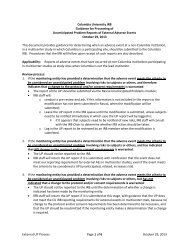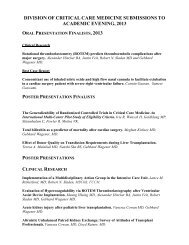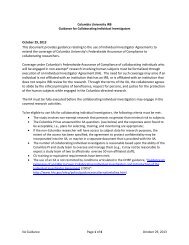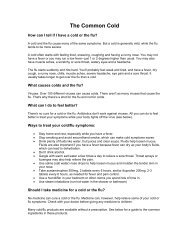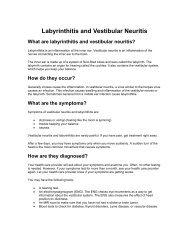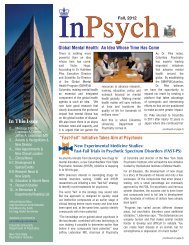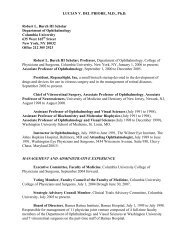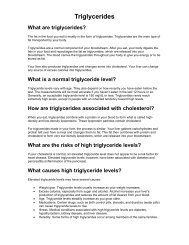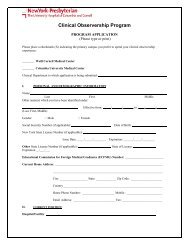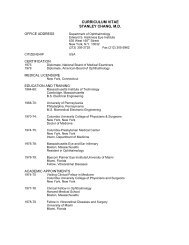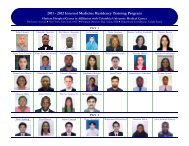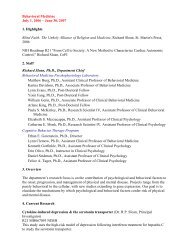news PS - Columbia University Medical Center
news PS - Columbia University Medical Center
news PS - Columbia University Medical Center
You also want an ePaper? Increase the reach of your titles
YUMPU automatically turns print PDFs into web optimized ePapers that Google loves.
A look at work<br />
from the labs<br />
of CUMC’s<br />
graduate<br />
programs<br />
Graduate life School<br />
From Molecule to Disease<br />
New drugs to treat disease are developed in two<br />
general ways. Large scale screening involves<br />
assessing the efficacy of an array of available<br />
chemical agents against a disease proxy. In contrast, a<br />
drug can be specifically constructed based on an understanding<br />
of the underlying disease process. Often these<br />
approaches overlap; some understanding of the disease<br />
process can guide the selection of drugs for screening.<br />
Several students in the Graduate Program in Pharmacology<br />
and Molecular Signaling use sophisticated<br />
techniques to examine at the molecular or even atomic<br />
level the interactions between disease-related proteins<br />
and ligands which bind to them, laying the groundwork<br />
for the design of more potent and specific drugs.<br />
Matt Le-Khac uses X-ray crystallography to assess<br />
the interaction between HIV, the disease-causing agent<br />
in AIDS, and small molecule ligands modeled on the<br />
receptor to which the virus binds to gain entry to the<br />
body’s immune system. (It was X-ray crystallographic<br />
pictures of DNA that led Watson and Crick to their<br />
epochal double helix model.) Matt prepares crystals<br />
(regularly arrayed lattices) of the ligand bound to a<br />
protein from the coat of HIV and takes them to a synchrotron<br />
facility to bombard them with a high-powered<br />
beam of X-rays.<br />
The scattering pattern of the X-rays after collision<br />
with the crystal yields information about the positioning<br />
of atoms within the crystal, information that<br />
By Daniel J. Goldberg, Ph.D.<br />
Professor and Director<br />
of Graduate Studies<br />
Department of Pharmacology<br />
The three-dimensional<br />
structure of protein<br />
enables researchers<br />
to screen for ligand<br />
interactions that may<br />
be relevant to treatment<br />
of disease.<br />
ILLUSTRATION BY<br />
ZACHARY WAYNE CARPENTER<br />
Spring 2012 <strong>Columbia</strong>Medicine 29



